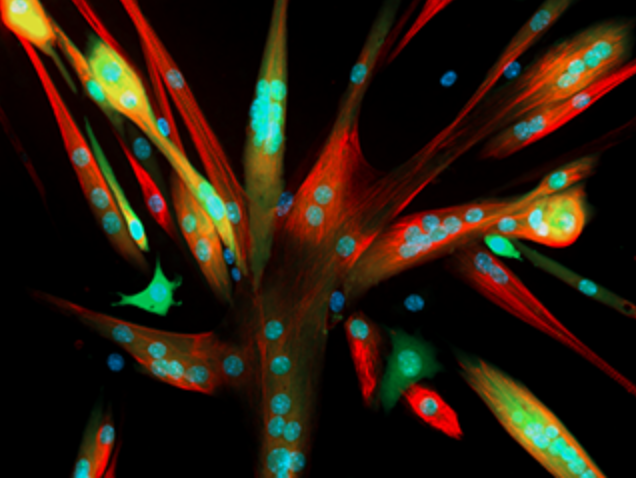.
S O U R C E : Genetic Engineering and Biotechnology News

In the past several years, we have seen some major advancements in the study of Duchenne muscular dystrophy (DMD), a rare but devastating genetic disorder that causes muscle loss and physical impairments. Investigators using the gene-editing tool CRISPR have shown in previous studies, in rodent and canine models, that the repair or removal of key disease mutations is possible, as well as improvement of muscle function. Now, in a new study from researchers at the University of Missouri (MU) School of Medicine scientists have shown that employing CRISPR to edit mutations in muscle stem cells (MuSCs) may provide the means for lifelong correction of the genetic mutation responsible for the disorder.
Findings from the new study were published recently in Molecular Therapy through an article titled, “AAV9 Edits Muscle Stem Cells in Normal and Dystrophic Adult Mice.”
“Research has shown that CRISPR can be used to edit out the mutation that causes the early death of muscle cells in an animal model,” explained senior study investigator Dongsheng Duan, PhD, a professor in the department of molecular microbiology and immunology at the MU School of Medicine. “However, there is a major concern of relapse because these gene-edited muscle cells wear out over time. If we can correct the mutation in muscle stem cells, then cells regenerated from the edited stem cells will no longer carry the mutation. A one-time treatment of the muscle stem cells with CRISPR could result in continuous dystrophin expression in regenerated muscle cells.”
Children with DMD have a gene mutation that interrupts the production of a protein known as dystrophin. Without dystrophin, muscle cells become weaker and eventually die. Many children lose the ability to walk, and muscles essential for breathing and heart function ultimately stop working.
In the current study, researchers first delivered the gene-editing tools to normal mouse muscle through AAV9, a virus that was recently approved by the FDA to treat spinal muscular atrophy.
“CRISPR editing of MuSCs with adeno-associated virus serotype-9 (AAV9) holds promise for sustained gene repair therapy for muscular dystrophies,” the authors wrote. “However, conflicting evidence exists on whether AAV9 transduces MuSCs. To rigorously address this question, we used a muscle graft model. The grafted muscle underwent complete necrosis before regenerating from its MuSCs. We injected AAV9.Cre into Ai14 mice.”
.../...
CONTINUED AT SOURCE












































